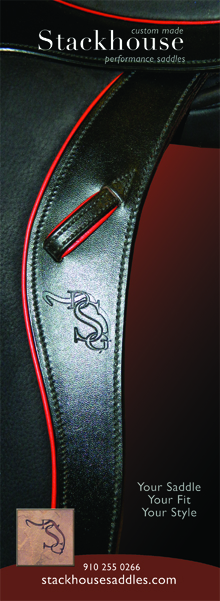Search the Site
Guest Blog post # 60: "Beyond the Mo" by Bill Woods
The line where collection begins is a blurry one. It's further complicated because too many of us who try to produce it don't quite know how to, and for mercenary reasons some horses are rushed into tests which require collection before they have the strength or understanding to pull it off correctly.
"Small C collection" is a process which should begin even in Training Level as you take your horse's natural way of going and begin to enhance it. Ordinary becomes Working. Thrust establishes connection. Redirected thrust produces an uphill, buoyant expression. Like a speedboat up on plane, something qualitatively different takes place as a horse learns to lift his body and load his hindquarters. As Major Lindgren preached, "We teach them collection for two reasons: To make your horse more comfortable to ride and to preserve his well being. There are no body shops for fetlock joints!"
One thing is for sure–-and you can take this to the bank–-the outline and the balance you are supposed to display at Second Level is not the same as what brought you success doing Training and First Level.
From a judge's standpoint, I'd much rather watch a rider struggling to make this change happen and not yet quite succeeding than to see a rider coasting blithely around being totally unaware that she's missing the boat.
The canter outline and balance is a prime example. Lower level horses can get away with a momentum-based canter--one which the rider maintains by hurrying her horse forward to catch up with his center of gravity. In a sense during every step he's being invited to fall onto his nose “but at least he's still cantering.”
To make a Collected Canter the horse must rethink what "in front of the leg" means. Now instead of being encouraged to cruise forward, he must understand that the leg means something besides speed. It must connect him so that his rider can make rebalancing half halts which "go through"— precisely timed use of the seat and leg into a momentarily non-allowing hand, which teach the horse to "rock back" and carry himself forward with his weight more evenly distributed front to back. When the horse understands "rebalance, don't stop," you're on the way to engagement-- to carrying power.
So chicken or egg? A little of both. Some of the movements like shoulder-in maybe ridden without collection, but the energy, the positioning, and goal-directed half halting work to produce it. On the other hand, try a canter-walk transition in a lower level balance, and you’ll be lucky to get three jog steps if not an absolute train wreck. You can aim for the transition, but its success or failure will depend entirely on whether you’ve created an engaged, momentum-free canter which permits a soft landing.






